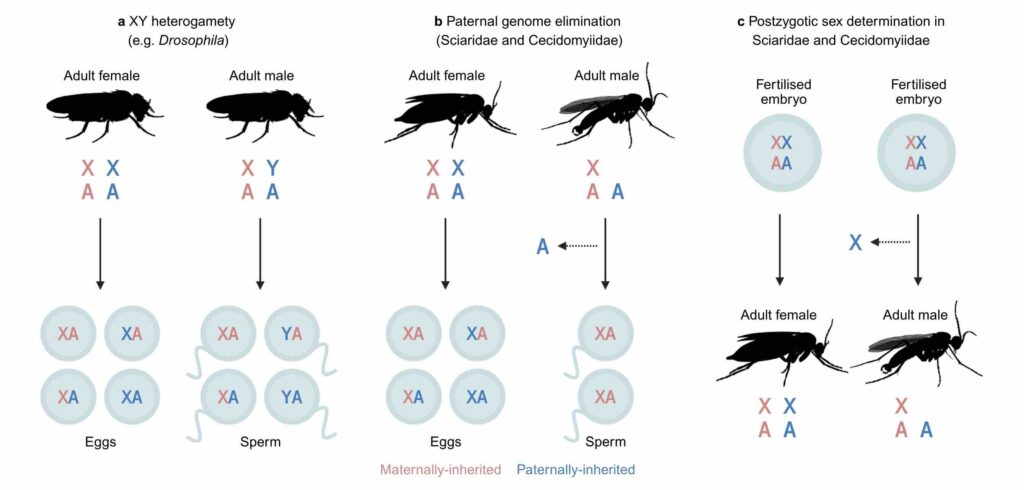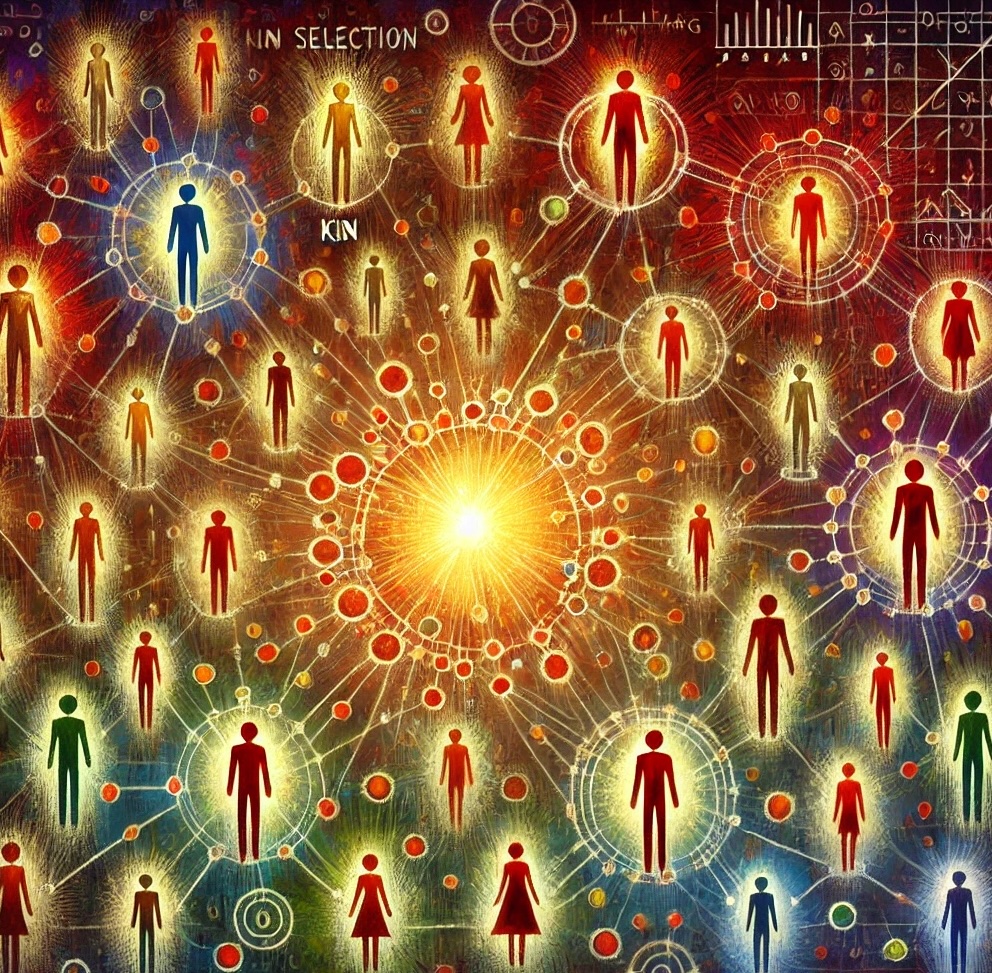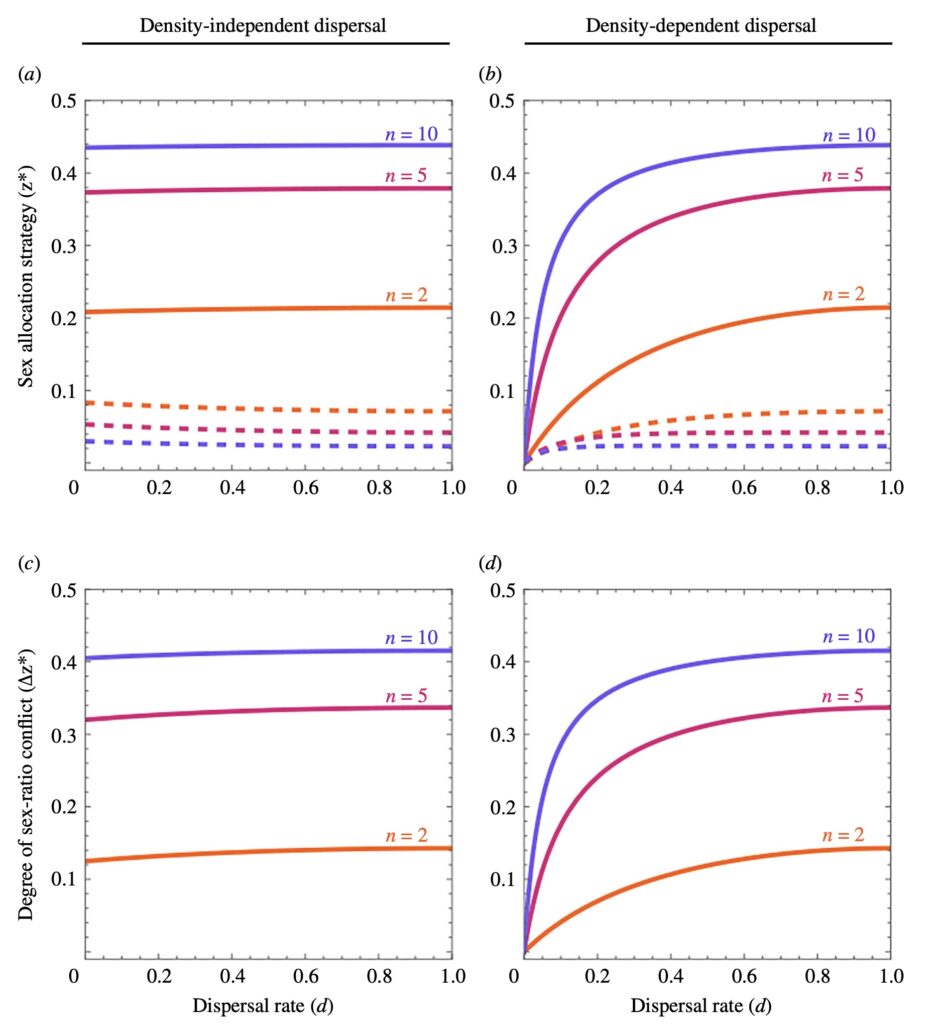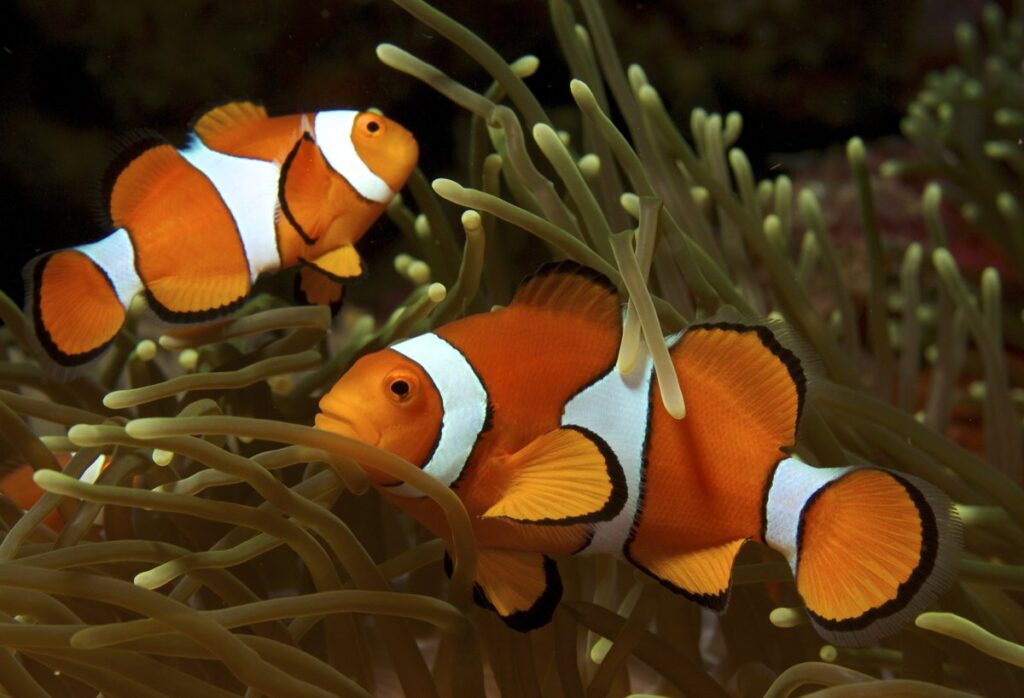Gardner A & Barteškaitė E (2025) Choosy dispersal promotes the evolution of altruism. Biology Letters 21, 20250589.
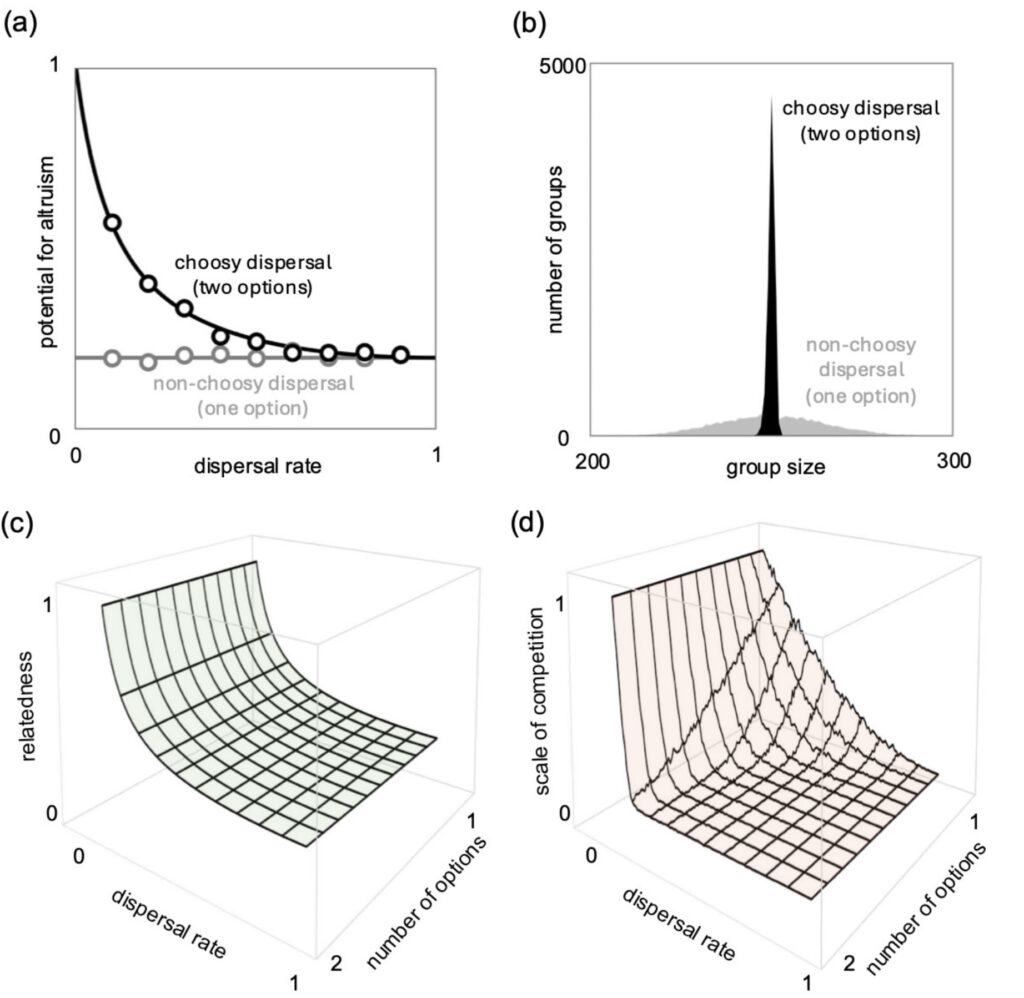
Altruistic behaviour is evolutionarily favoured through the action of kin selection. A simple mechanism for kin selection is population viscosity, whereby individuals do not move very far over the course of their lives, such that even indiscriminate helping of neighbours is liable to benefit one’s genetic relatives. However, population viscosity is also associated with intensified resource competition among kin, which acts to inhibit the evolution of altruism. In standard models of population structure, these opposing effects of viscosity exactly cancel so that the evolutionary potential for altruism is completely invariant with respect to the rate of dispersal. Here, we investigate the consequences of load-balancing dispersal—whereby dispersers exhibit a preference for settling in less-crowded areas—for the evolution of altruism. Using mathematical modelling and individual-based computer simulations, we find that load-balancing dispersal dramatically reduces the kin-competition consequences of altruism, and thereby strongly promotes the evolution of altruism in viscous populations. We discuss other implications of such load-balancing dispersal for social evolution.


